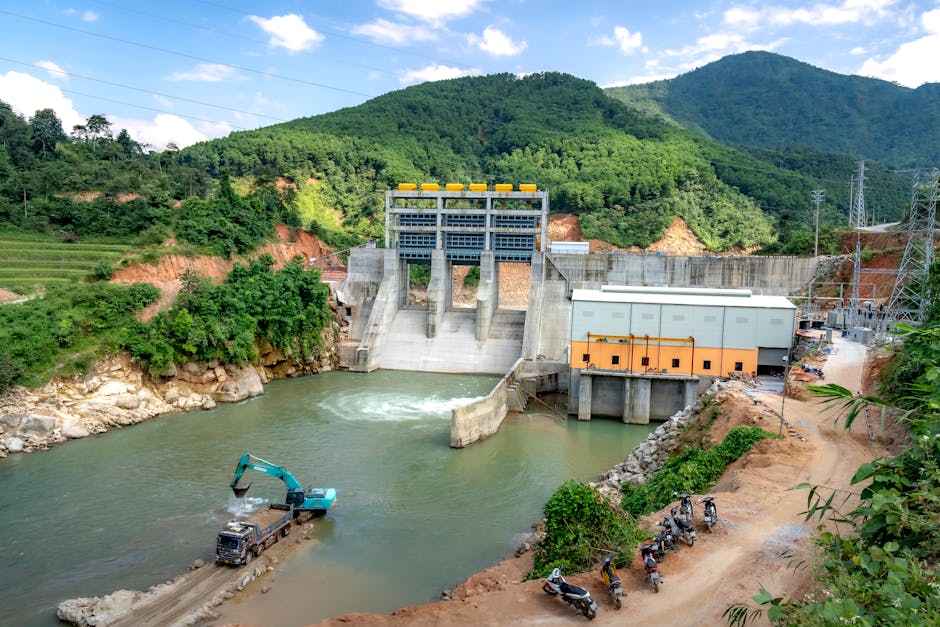Breakthroughs in Renewable Energy Transforming Power Generation
Renewable energy has become a pivotal force in reshaping how we generate and consume power. With advancements in technology and a growing commitment to reducing carbon emissions, breakthroughs in renewable energy are now making clean, sustainable power more accessible than ever before. These developments are not only addressing environmental concerns but also transforming energy economies around the globe by providing innovative solutions for long-standing challenges in the energy sector.

From solar panels that can generate electricity even in low-light conditions to wind turbines capable of harnessing offshore winds, renewable energy technologies are evolving rapidly. Governments, private organizations, and researchers are investing heavily in these innovations to meet global energy demands sustainably. As a result, these strides are not only accelerating the shift away from fossil fuels but are also improving energy efficiency and reliability for households and businesses alike.
Advances in Solar Energy
Solar energy has long been a cornerstone of renewable power generation, and recent breakthroughs have significantly boosted its efficiency and usability. Innovations like bifacial solar panels, which absorb sunlight from both sides, and perovskite solar cells, known for their high efficiency at lower costs, have expanded the scope of solar energy applications. Additionally, solar tracking systems that follow the sun’s movement throughout the day have improved energy capture by up to 25% compared to fixed installations.
Countries such as China and the United States are leading the way in scaling up solar production. According to data from IRENA, global solar capacity reached over 1,200 gigawatts (GW) by 2023. These advances are making solar power more affordable and widespread, enabling millions to benefit from cleaner energy sources.
Wind Energy Innovations
Wind power has experienced remarkable progress with advanced turbine designs and offshore wind farms. Modern wind turbines now feature longer blades and higher towers, which allow them to capture stronger and more consistent winds at greater altitudes. Offshore wind farms have also gained traction due to their ability to harness powerful coastal winds.
- The development of floating wind turbines has opened up new opportunities for countries with deep coastal waters.
- Energy storage solutions integrated into wind systems ensure consistent power supply during periods of low wind activity.
- Enhanced predictive maintenance technologies use AI to monitor turbine performance and minimize downtime.
For example, Denmark’s Hornsea Project is currently the largest operational offshore wind farm in the world, generating enough electricity to power over one million homes. The project highlights how wind energy can contribute significantly to reducing dependence on traditional fossil fuels.
Hydropower: Beyond Traditional Dams
Hydropower remains one of the most established renewable energy sources but is now evolving with new technologies aimed at minimizing environmental impacts. Micro-hydropower systems designed for small rivers and streams allow for localized electricity generation without disrupting ecosystems. Similarly, advancements in pumped-storage hydropower enable better integration of other renewables into the grid by storing excess energy during periods of low demand.
For instance, Austria has implemented several micro-hydropower projects that provide clean electricity to remote communities while preserving natural habitats. These innovations underscore the potential of hydropower to complement other renewable sources effectively.
Emergence of Green Hydrogen
Green hydrogen is rapidly gaining attention as a versatile solution for decarbonizing sectors that are challenging to electrify, such as heavy industry and transportation. Produced using renewable electricity through electrolysis, green hydrogen emits no greenhouse gases when utilized as an energy source. Recent developments in electrolyzer technology have reduced costs and improved efficiency, making green hydrogen a more viable option.
The European Union has committed significant resources toward developing a robust green hydrogen infrastructure under its "European Green Deal." Projects like Hybrit in Sweden aim to replace coal-based steel production with hydrogen-based methods, potentially eliminating millions of tons of CO2 emissions annually.
The Role of Energy Storage
Energy storage technologies are critical for addressing the intermittent nature of many renewable sources. Advances in battery technologies, including lithium-ion and solid-state batteries, have made it possible to store surplus electricity generated during peak production times for later use. Other emerging solutions include flow batteries and thermal storage systems that offer long-duration energy storage capabilities.
- Lithium-ion batteries dominate the market due to their high energy density and declining costs.
- Flow batteries are ideal for large-scale storage applications because of their scalability and longevity.
- Pumped hydro remains a reliable method for large-capacity storage despite its geographic limitations.
Tesla's Megapack installations in Australia serve as an excellent example of how large-scale battery storage can stabilize grids powered predominantly by renewables. By storing excess solar and wind energy during off-peak hours, these systems ensure a steady supply even when production dips.
The breakthroughs in renewable energy technologies are undeniably reshaping how power is generated worldwide. From innovative solar panels and advanced wind turbines to green hydrogen and cutting-edge storage solutions, these advancements promise a cleaner, more sustainable future for generations to come. With continued investment and collaboration among governments, businesses, and researchers, the transition toward renewable energy will likely accelerate further, ushering in a new era of sustainable power generation.
This article was generated by AI